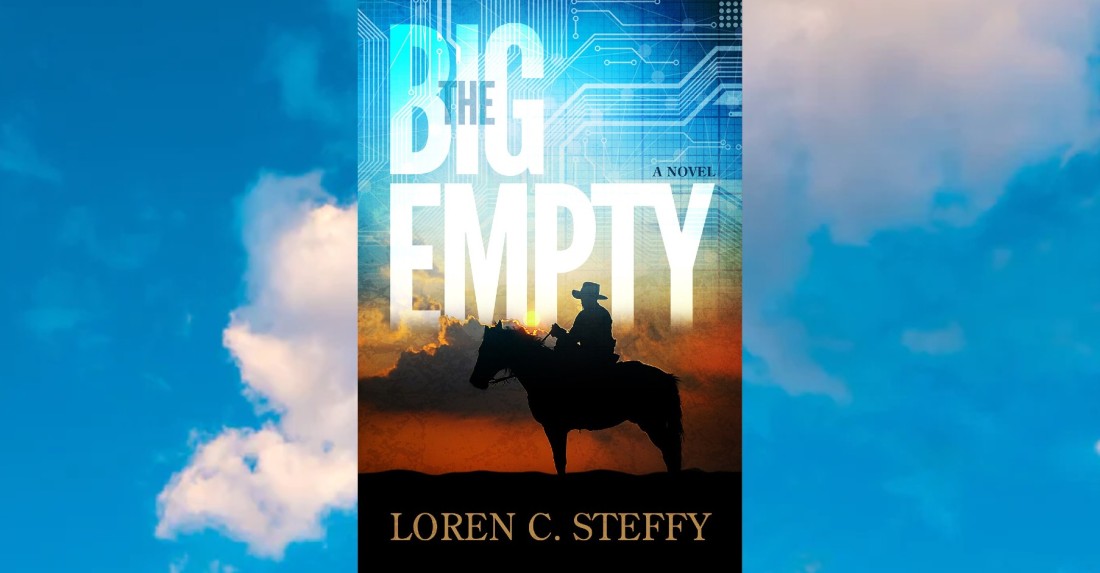From penning exposés such as Drowning in Oil and The Last Trial of T. Boone Pickens, to working as a senior writer for Bloomberg, Loren C. Steffy made it his business to take to task big business and its impact on America’s socioeconomic landscape. With his debut novel The Big Empty, Steffy carves out a niche in the fiction genre and fills it with his insight — enlightening and grim — on the American way of making a living, including the kind involving “coming home caked in sweat and dirt and animal [dung] every night.”
Set in the eponymous boonies of West Texas, The Big Empty follows ranch manager Trace Malloy and techie Blaine Witherspoon, the two grappling with a strange land as well as stranger circumstances when the tech company AzTech sets up shop in the town of Conquistador with a semiconductor manufacturing plant. Not only would this bring potential jobs and a “[fair] share of soft-handed men in black-and-yellow rental trucks,” it’d also attract an influx of urban, job-seeking transplants, along with metropolitan values that contrast with the rugged individualism of rural Texas.
The two men’s attachments to their respective trades, however, threaten to widen the schism between them and the business interests they each represent in the Conquistador community. So instead of acting like “pioneers circling their wagons to fend off the unknown,” Malloy and Witherspoon work to confront and understand one another and the harsh reality that’s settling across the land and in their livelihoods. At the same time, both men must also contend with their personal woes as they try to wrangle their family and work lives.
On the one hand — the one that wrangles livestock — the Big Empty puts pressure on Conquistador’s ranching business, causing Malloy to tighten his grip on his way of living for fear of losing the one skill he’s known and mastered his whole life. As more cows keep getting “culled because they’d grown too old for breeding purposes,” Malloy struggles to reconcile the benefits AzTech brings to the land — which has “not much in the way of resources” besides the human sort — and the big demands that the new homeowners make. They want “to say where the streets go, who gets how much water, how much electricity [they] need” without showing consideration for the old timers’ culture — or for how much land said old timers need for raising grazing livestock.
On the other hand — that which points to “a future that otherwise hinged on sentimentality” — the Big Empty cuts into Witherspoon and the transplants’ profits and prospects. Water conservation woes cause discord between the homeowners and locals that soon devolves into arguments about “land management, grazing methods, and livestock water usage.” And just when he begins to understand his circumstances and surroundings, Witherspoon uncovers in his company a case of “Fortune 500 executives [cooking] the books like a bunch of penny stock hucksters” that threatens to upend his chances at striking it big and strain his relationship with his wife and son. Such trials highlight how go-getters can’t grow complacent and take the land both for themselves and for granted in their pursuit of the enterprising dream, especially in a land not conducive to bounties of greenery — vegetation or greenback.
In light of the tug-of-war between tradition and progress, Malloy and Witherspoon are forced to take proper stock of not just their respective situations, but also of each other. Malloy offers Witherspoon a tour on an unruly steed to see Conquistador’s ranching operations and the wide ranges that lie around them — if only to further drive home the land’s desolateness and indifference to human ambition of any kind. In return, Witherspoon has Malloy pay a visit, and don a bunny suit, to the chip factory, whose sterile and monitored surroundings contrast with the chaotic laws of nature. Through this dialogue of favors instead of fisticuffs, The Big Empty promotes laying oneself bare like the land surrounding the men.
That willingness to open oneself up without reservations can also make the narrative buckle under the weight of background details. From the description of the travails Malloy’s son endured following a career-ending football injury to the passages explaining how Conquistador’s original Scottish settlers drained the land of its resources without thinking of future generations, the bouts of exposition cause pacing quirks that seem to mirror the characters’ detachment from the here-and-now, spending more time living in the past or picturing the future.
The stumbles along the path that Steffy carves out in the novel eventually subside, and Witherspoon’s transition to uncharted territory eases over time. The characters are forced to reveal their true selves: Witherspoon attends the funeral of Malloy’s mother in spite of the corporate book-cooking gnawing at his conscience, and Malloy and Witherspoon join forces to put a stop to a wildfire that risks burning down the fruits of everyone’s labor.
Like the titular land itself, Steffy’s novel is uncompromising in spotlighting the strains that the drive toward material achievement puts on the individual in the face of nature’s whims. The Big Empty uses its overarching conflict between Conquistador’s opposing business interests to teach its people not to steamroll one another in their mad dash toward sustaining old ways of life or propping up new ones “in a vain attempt to find comfort.” Instead they choose to embrace the unknown and see where cooperation — rather than (just) competition — will take them.

FICTION
The Big Empty
By Loren C. Steffy
Stoney Creek Publishing Group
Published May 25, 2021

